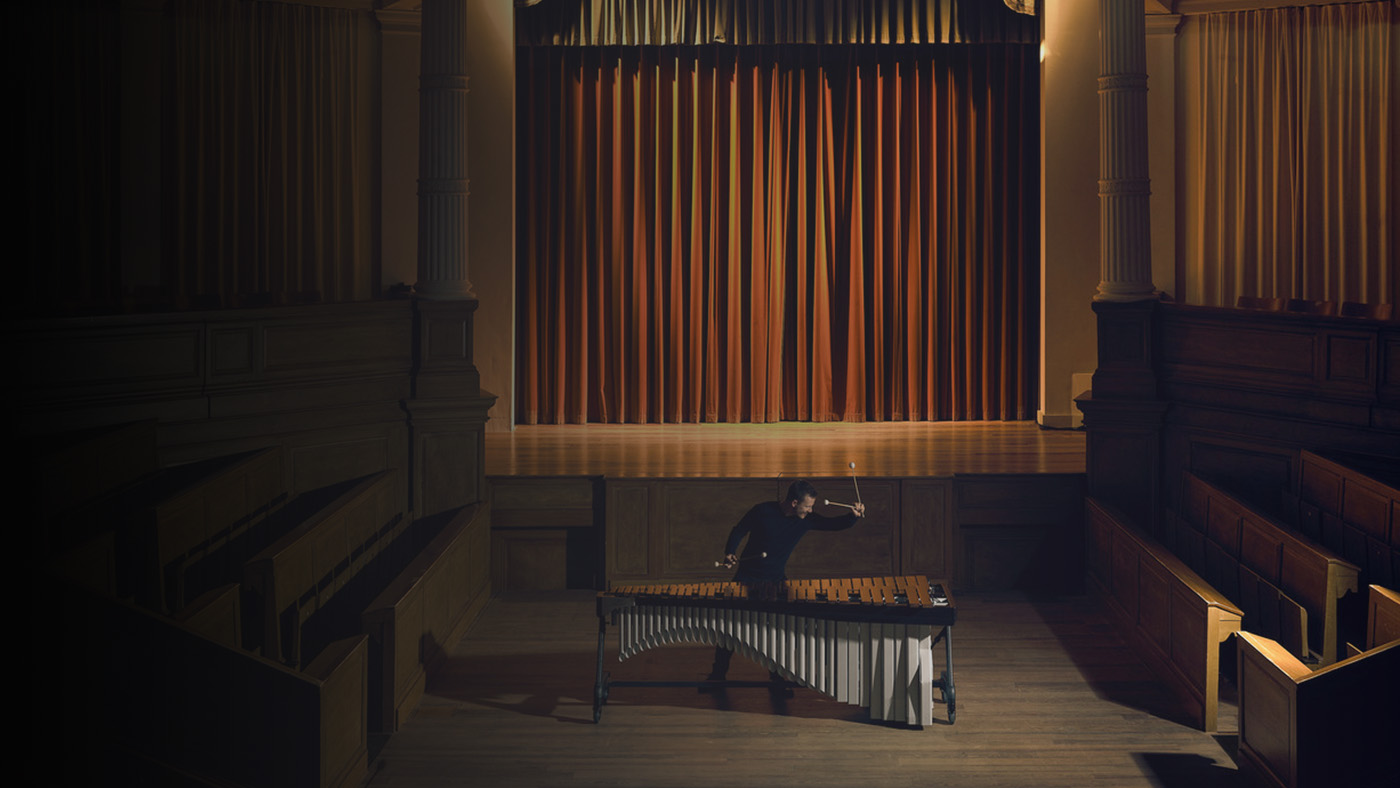![[Translate to English:] [Translate to English:]](/fileadmin/_processed_/a/e/csm_Bettina_Schulz_Jurierung_4b445ae2d8.jpg)
“Touching, Smelling, Hearing” – How Important Are Sensory Impressions for Print Products?

Design plays a key role in many areas of life. Musical instruments can convince not only with their sound, but also with an extraordinary design. The Red Dot award-winning Alpha Apex marimba from Adams proves how well sound and design can harmonise.
In the interview, Ruud Corstjens (Adams Musical Instruments) and the designers Steven Kessels and James Granger (KesselsGranger DesignWorks) talk about the function of design in music.
Red Dot: What is the significance of design for a musical instrument?
Steven Kessels: A musical instrument is often a showpiece and combines many qualities through design. It must achieve the highest standards in sound, performance and playing ergonomics. Most materials are chosen for an acoustic reason, and these have to be finished to the highest standard. The shape must express the emotion of sound and communicate this in the form language. Moreover, a musical instrument that is used in different settings (in both classic and modern architectural surroundings) needs to both stand out and be exciting to look at, in a sophisticated and timeless manner.
What impact can good (or bad) design have for musical instruments?
SK: Every musician wants to shine on stage, and a good visual design definitely contributes to a musicians’ stage performance. Besides that, a good design can give an instrument an identifiable character and improved playing dynamics, that adds to the experience.
On the other hand, a poorly designed instrument can often look too industrial, kitsch or even grotesque. It goes without saying that poor design resulting in resonance and low sound quality is not a good situation for a manufacturer or artist.
What was your aim in designing the marimba? Was there a certain approach?
James Granger: Our aim was to create an instrument that was clearly identifiable as an Adams. It needed to be breath-taking with world-class qualities. We examined other industries, on how movement and elegant constructions are applied through design. Such as automotive, architecture and even aviation. We also worked closely with artists and the engineering team at Adams to create the best possible result.
SK: Our aim was to create an instrument that expresses the sound. It needed to communicate the sound from a distance, even when not played. The flowing lines and specially cut resonators, give movement to the instrument and evoke expectations of how the instrument sounds.
There are now many smart instruments. To what extent does this change the playing of musical instruments?
Ruud Corstjens: Traditional instruments will never disappear. There are other dimensions than just sound that contribute to the musical experience for both audience and musician. However, a new generation of musicians is exploring their boundaries. Electronics and smart instruments create new opportunities and the crossovers that arise from this are often a true enrichment for the cultural world. Nico Gerstmayer‘s performance at the Red Dot Gala illustrates this perfectly.
“Musicians express themselves through their instrument and are therefore extremely critical users. We can come up with the most beautiful things and implement technical innovations, but in the end it is the musicians who make an instrument excel. Our success relies big time on close cooperation with musicians.”
In recent years, more and more musical instruments have been awarded. What can be the reason for this?
JG: Typically, most musical instruments are centred in very a conventional market. Certain instruments have gone through a centuries-old evolution that determines the shape, the materials used and the user’s acceptance of how the instrument should look. However, newer instruments, such as the marimba, and vibraphone are relatively young on the international market and haven’t gone through the evolutionary design generations as say a piano. Therefore, the design is still fluid, giving space for the designer.
As with most products, there is also the requirement to generate new ideas and new technology, even for traditional instruments. We’re seeing a greater acceptance for new avant-garde ideas. However, it needs an open mindset and some boldness from a manufacturers point of view. With Adams Musical Instruments we have a partnership since 2011, resulting in many successful instruments.
Ultimately a musical instrument is a high-performance product, pushing the boundaries of manufacturing, technology and often centuries-old handcraft. As a result, we’re seeing more instruments being introduced with a progressive design.
What was the motivation to submit the marimba for a Red Dot?
SK: Most designs in the concert percussion industry are very conventional, so the Alpha marimba really stands out. The Red Dot is regarded as the greatest label worldwide for recognition of good design. We’re thrilled that our teamwork with Adams and KesselsGranger has been recognised by the international jury. This is not only an achievement for the team, but also recognition that will add to the exclusivity of the instruments.